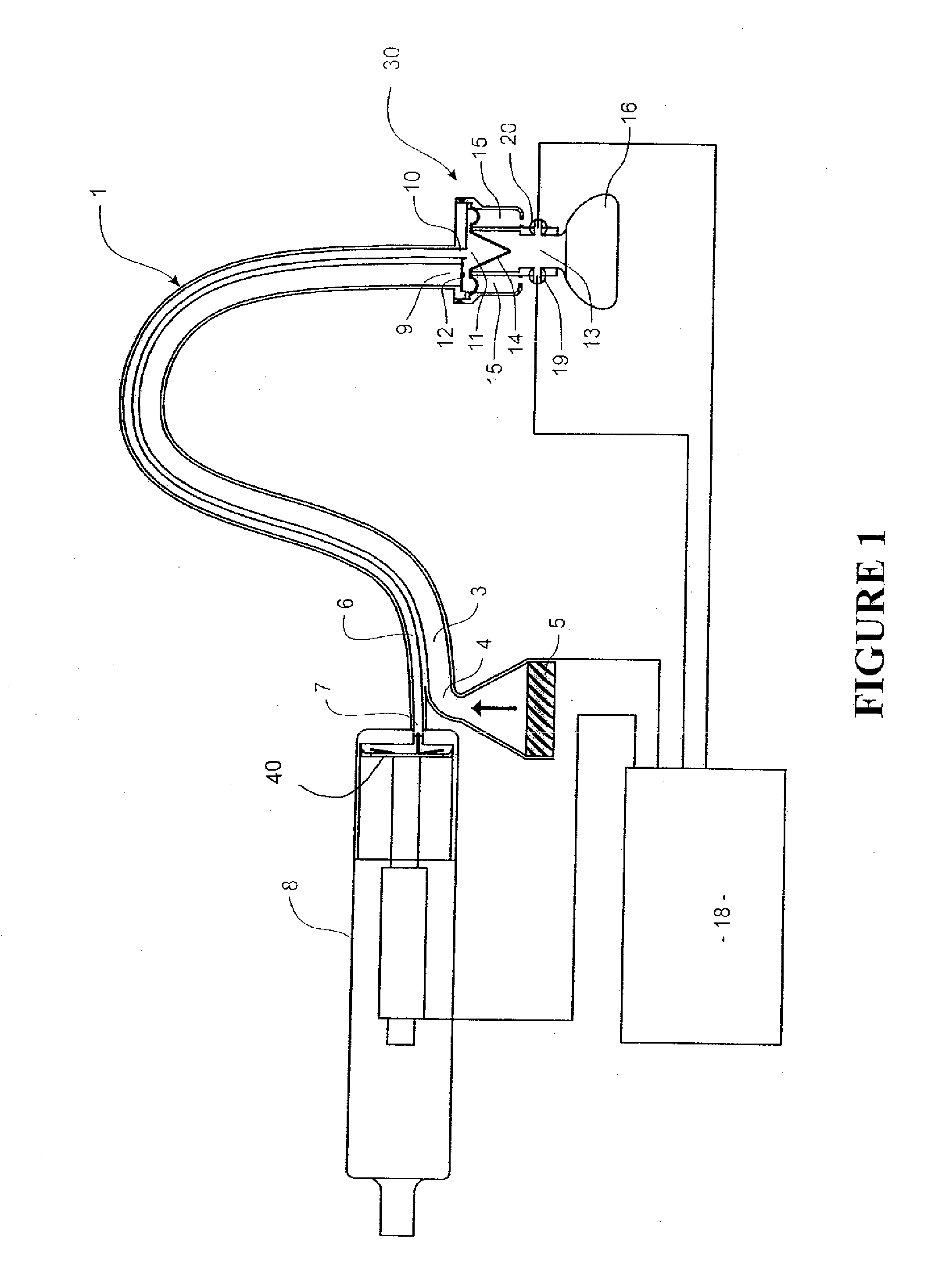Conduit
a technology of conduit and splint, which is applied in the field of conduit, can solve the problems of reducing accuracy, both in pressure and timing
- Summary
- Abstract
- Description
- Claims
- Application Information
AI Technical Summary
Benefits of technology
Problems solved by technology
Method used
Image
Examples
example 1
[0149]According to FIGS. 1-2C, the following is a generalised description of operation of the invention.
1. CPAP Delivery Stage: Inhalation Part of Patient Airway Cycle (FIG. 2A)
[0150]1.1 CPAP flow—a large diameter tube is used for delivery of a secondary inspiratory gas source (5) by an electrically operable blower.[0151]1.2 Large diameter tube is being used for greater control of CPAP airway pressure delivery. This is used to assist in avoiding pressure response problems.[0152]1.3 CPAP airflow pressure delivery is greater than at the end or beginning of tidal volume delivery and higher than patient airway pressure.[0153]1.4 The first valve (12) (valve for CPAP) is open.[0154]1.5 CPAP airflow pressure is then delivered through the first valve (12).[0155]1.6 The second valve (14) is open to allow gas flow through communal region (11) via the passage (13) to the patient interface (16) for delivery to a patient.[0156]1.7 Gas supply or air supplied will not flow back through the primary...
example 2
[0167]According to FIGS. 3-4C, the following is a generalised description of operation of the invention.
4. CPAP Delivery Stage: Inhalation Part of Patient Airway Cycle (FIG. 4A)
[0168]4.1 CPAP pressure is set, for example, to 5 cm H2O pressure. This pressure is set at the controller, e.g. at a control panel, and pressure is sensed and checked by a pressure sensor (19).[0169]4.2 CPAP pressure is then delivered through the larger tube of about 10 mm to 15 mm diameter via the CPAP blower device.[0170]4.3 The patient airway has a lower pressure than the set CPAP pressure (P3).[0171]4.4 The first valve (12) being a soft flexible valve made of for example, silicon, opens or is open and delivers air / oxygen to the patient through the now open second valve (14). The second valve (14) is opened by actuation of an actuator (17).
5. Tidal Volume Delivery Stage: Inhalation (FIG. 4B)
[0172]5.1 The primary inspiratory gas supplier (8) is set as an example to a pressure of 20 cm H2O and a tidal volume...
PUM
 Login to View More
Login to View More Abstract
Description
Claims
Application Information
 Login to View More
Login to View More - R&D
- Intellectual Property
- Life Sciences
- Materials
- Tech Scout
- Unparalleled Data Quality
- Higher Quality Content
- 60% Fewer Hallucinations
Browse by: Latest US Patents, China's latest patents, Technical Efficacy Thesaurus, Application Domain, Technology Topic, Popular Technical Reports.
© 2025 PatSnap. All rights reserved.Legal|Privacy policy|Modern Slavery Act Transparency Statement|Sitemap|About US| Contact US: help@patsnap.com



